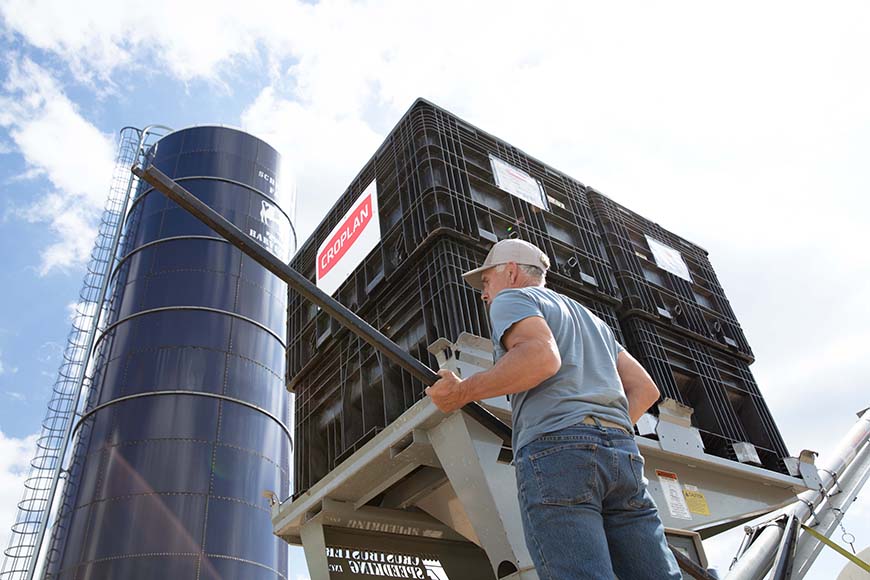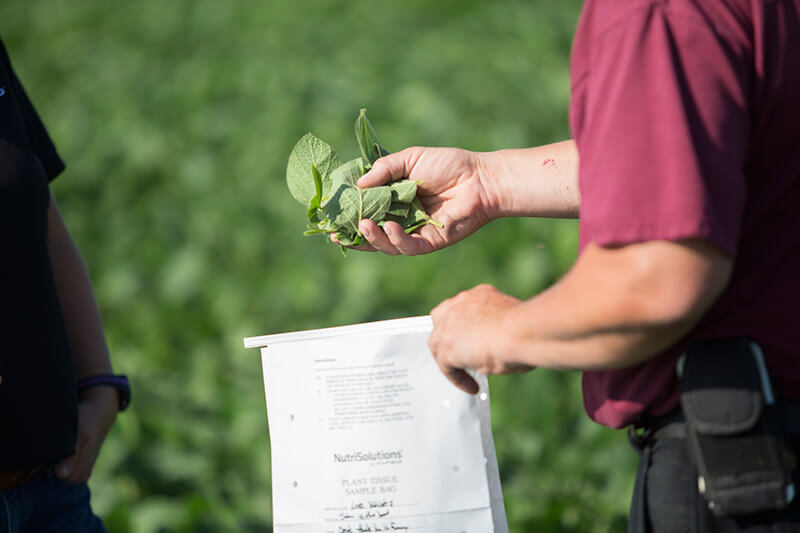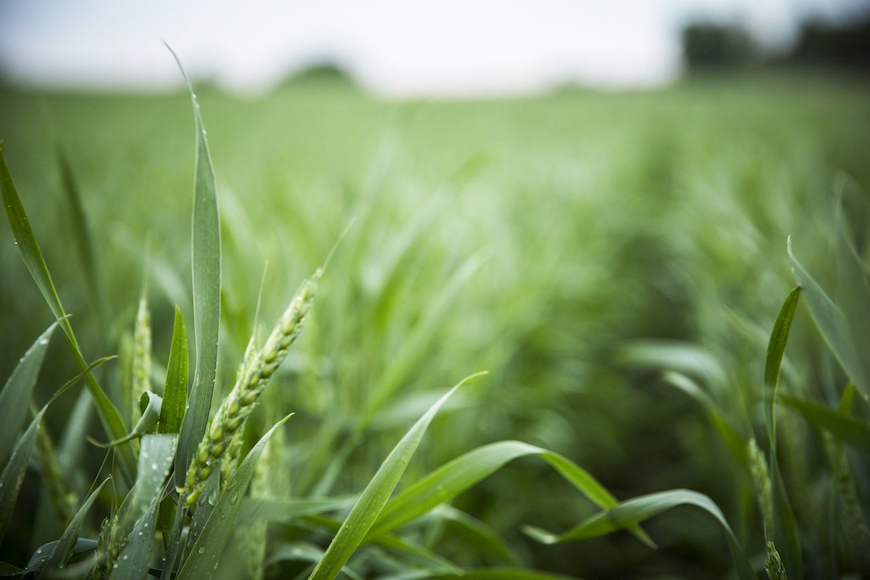6 Agronomic Insights for Success in 2019

There is so much we can learn from good data, but often in the rush to begin a new season, we start working without fully using the information we already have to help us do that work better. As you gear up for the 2019 growing season, be sure to leverage 2018 learnings to help optimize 2019 results.
Insight #1: Data supports more optimal decision making.
This seems like a no-brainer, but it’s worth pointing out that each year, there are between 75 and 90-plus corn bushels at stake based on the variance between hybrids in response to population, response to nitrogen, response to rotation and response to fungicide. In 2018, we field-tested 240 hybrids from CROPLAN®, DeKalb®, NK®, Mycogen® and Pioneer®. The yield response ranges we saw below indicate that it’s important to understand how your chosen hybrids react to different management practices to optimize yield potential.
- Response-to-population range: -3.8 to 20.8 bushels per acre1
- Response-to-nitrogen range: 58.4 to 119.4 bushels per acre2
- Response-to-rotation range: 6.9 to 29.9 bushels per acre3
- Response-to-fungicide range:-3.5 to 39.5 bushels per acre4
Another good reminder is that spending smarter beats spending more. Response-to scores allow predictive inferences to be made to improve profitability potential and margin capture per acre. The better you can predict the results of your management decisions, the more confidently you can make decisions that net more yield. And in most cases, this will result in more opportunity than you imagined.
The most important 2019 decision is whether or not you choose to rely on data to inform your plans.
Insight #2: Genetic performance varies widely by environment.
Rainfall amounts were all over the map in 2018, quite literally. Roughly the western half of the United States had very little rainfall or none at all, which in many cases led to moisture deficits of up to 20 inches in some areas. Wide swaths of the eastern half of the U.S. saw an excess of 20 inches of rainfall above average.
We can’t predict what kind of conditions Mother Nature will hand us each season. And, as you know, there is no silver bullet hybrid that works great in every condition. But our data shows us that even top-performing hybrids have limitations. To help mitigate the effects of those conditions that are out of your control, it’s helpful to place and manage a hybrid based on what we understand are ideal conditions for its performance. For example, if you know a particular hybrid doesn’t do well under wet conditions, you may choose to place it on more well-drained soil. WinField® United Characterization Charts(CHT) offer a visual way to compare hybrid performance based on specific management variables, including crop rotation, planting population and soil type.
Insight #3: Nutrition is important and requires in-season measurement.
Understanding the nutritional status of your crop may be one of the best ways to manage profitability. It’s important to know what your most limiting nutrient is and to manage it in time for the plant to respond to it. Crop modeling tools such as the R7® Field Forecasting Tool allow you to run scenarios that consider soil type, weather, nitrogen source, stabilizer, timing and yield potential so you can predict when your crops will need nutrients.
Tissue sampling is vital to understanding what is going on inside the plant. Even if you are unable to react to sample results with an application, tissue samples create an excellent baseline for planning macronutrient and micronutrient applications next season. Answer Plot data shows that if nutrition is a limiting factor or nutritional ratios are not right, the genetic potential of crops may be limited and you may not see a positive response to in-season micronutrient or fungicide applications. It really does pay to know where your plants stand nutritionally.
You know that fungicides help protect crops, but what you may not know is how to optimize the return on your fungicide investment. That’s where data can help. By understanding how your hybrids to respond to a fungicide application, you can focus your input dollars where there is a higher potential for positive return. That could happen either by choosing the right fungicide or by proactively choosing higher response-to-fungicide hybrids.
At Answer Plot locations in 2018, fungicides increased average corn yield regardless of disease pressure:
- In high-disease-pressure sites,5 yields were an average of 13.7 bushels per acre higher in corn receiving a fungicide treatment versus untreated corn.
- In medium-disease-pressure sites,6 yields were an average of 13.0 bushels per acre higher in fungicide-treated versus untreated corn.
- In low-disease-pressure sites,7 yields were an average of 11.6 bushels per acre higher in fungicide-treated versus untreated corn.
Trial results also revealed that fungicide ROI potential can depend on your hybrid’s response-to-fungicide (RTF) score and level of disease pressure. WinField United data shows that even in the absence of disease, there could be a double-digit yield return on fungicide applications when a hybrid has a high RTF score. It also shows that in low-disease-pressure environments, returns may be lower with low-RTF hybrids. It pays to know where your hybrids fall.
Research also shows that there is a yield response to certain fungicides under stressful conditions, including high heat and drought. Fungicide applications can help reduce the effects of heat and moisture stress on a plant to optimize photosynthesis. Keeping the plant healthy late in the season will allow it to help increase test weight. Much of the yield potential of modern hybrids depends on late-season grain fill and kernel depth.
Insight #5: Data simplifies weed-control decisions.
Herbicide-resistant weed populations are increasing and expanding into geographies we hadn’t seen them previously. You need to be more proactive and aggressive with your weed-control plans. But is paying a premium price for new herbicide-tolerant seed technology worth it? There are a lot of questions about what products deliver the best ROI potential when balancing weed-control options and variety yield performance. And the answer is, there’s not one standard weed-control program that will work for everyone. Weed control is about more than just the trait package of your seed. You really need to customize a comprehensive, season-long plan based on the weed species in your fields, your management preferences and your budget.
Using data can help you narrow down decisions and simplify your weed-control plan. For example, our Answer Plot herbicide-trait trials in soybeans show that seed companies have, for the most part, successfully integrated traits into top-yielding varieties, giving you the latitude to make a trait choice based on weed-control needs.
In addition to choosing the right seed genetics and traits, adding the right partner products to herbicide tank mixes can improve weed control. WinField United research shows that when using the Roundup Ready® XtendTM trait system and adding InterLock®adjuvant to the tank reduces fines droplets (under 150um) by more than 30 percent, greatly reducing the risk of off-target drift. InterLock is formulated to optimize spray droplet size so less product is lost due to drift or evaporation before the herbicide gets into the plant.
What does that mean for you? The bottom line is that adding a drift and deposition aid to your herbicide applications gets more active ingredient to the plant, resulting in better coverage and more effective weed control. Adjuvants can also help in the battle against herbicide-resistant weeds, because with better herbicide coverage, you should see fewer weeds escaping control.
Insight #6: Seed treatment advancements help add yield.
Seed treatments come standard on many of the products you plant. But not all seed treatments are formulated with the same active ingredients; therefore, it pays to know what’s on your seed. Fortivent™ Zn seed treatment is a new product available on a limited number of CROPLAN corn hybrids in 2019. Coating seeds with Fortivent Zn promotes quick emergence, even in cool, wet conditions, and helps establish strong, healthy stands.
Data from 41 Midwest Answer Plot locations in 2018 showed, on average, a 5-bushel-per-acre yield advantage for Fortivent Zn–treated hybrids compared to the same untreated hybrids. Forall six hybrids tested, there was consistently a positive yield response to Fortivent Zn treatment when all other management practices were the same.
Zinc is an essential nutrient for vigorous germination of corn seed, helping promote consistent emergence and even stands. It is a key element in several metabolic processes, including efficient photosynthesis. Even in soils with an adequate zinc soil test result, corn may be deficient in the nutrient because zinc is not as available for plant uptake in cool soils, which are typical in early spring. In fact, tissue testing across the country in 2018 revealed that 78 percent of corn samples were deficient or responsive for zinc. Farmers who want to take advantage of earlier planting to maximize yield potential will find that adding zinc to their seed treatment helps give them a healthier crop that is equipped to battle in-season challenges.
Take advantage of resources to help boost profitability
So, don’t forget the data before you head into the field this spring. Take a look at the Answer Plot website and talk with your local trusted advisor about the specific data points that will help improve your decision-making.
Remember, the most important 2019 decision is whether or not you choose to rely on data to inform your plans.
1 National average yield difference between 30,000 and 37,500 plant per acre.
2 National average yield difference non-limited and limited nitrogen applications; rates varied by soil type and location.
3 National average yield difference between first year and corn-on-corn rotations.
4 National average yield difference between fungicide application at V5/R1 and untreated control.
5 Based on 6 Answer Plot locations with high-disease-pressure sites.
6 Based on 6 Answer Plot locations with medium-disease-pressure sites.
7 Based on 12 Answer Plot locations with high-disease-pressure sites.
© 2019 WinField United. Answer Plot®, CROPLAN®, FortiventTM Zn, InterLock®, R7®and WinField® are trademarks of WinField United.
DeKalb® is a trademark of Monsanto Technology LLC.
NK® is a trademark of Syngenta Group Company.
Mycogen®is a trademark of The Dow Chemical Company (“Dow”) or an affiliated company of Dow.
Pioneer® is a trademark of E. I. du Pont de Nemours and Company or its affiliates.





